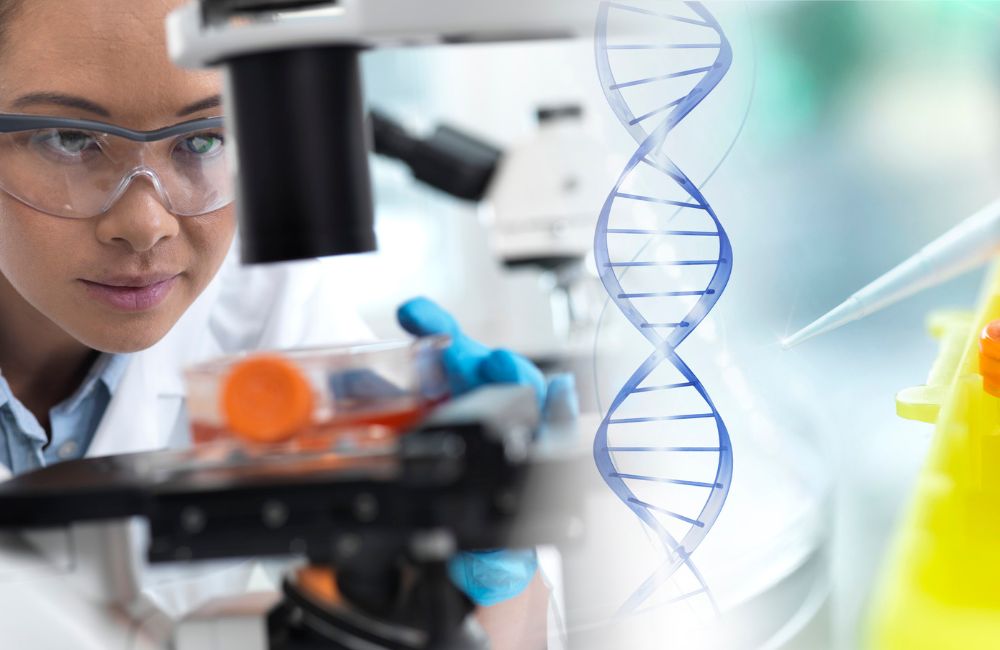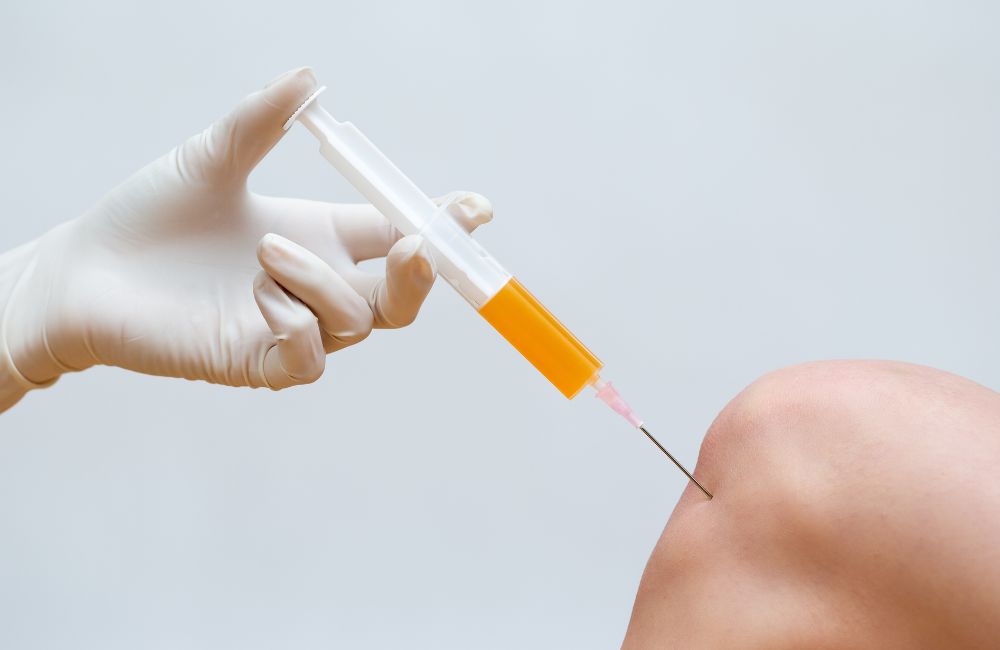
Chronic back pain is a prevalent condition affecting approximately 16 million adults or 8% of the adult population, significantly impacting daily activities and quality of life. Traditional treatments such as medication, physical therapy, and surgery often provide only temporary relief and can come with significant risks and side effects. However, advancements in medical science have introduced innovative treatments like stem cell therapy. Let’s explore how to manage chronic back pain with stem cell therapy, providing valuable insights and practical advice for those considering this treatment.
Table of Contents
Key Takeaways
What is Chronic Back Pain?
What is Stem Cell Therapy?
How Stem Cell Therapy Helps in Managing Chronic Back Pain
How to Prepare for Stem Cell Therapy
What to Expect During Stem Cell Therapy Session
How to Maximize the Benefits of Stem Cell Therapy for Chronic Back Pain
What Are the Risks and Side Effects?
Frequently Asked Questions
Take the Next Step Towards Recovery with BioRestore
| Key Takeaways ✔ Stem cells can regenerate damaged intervertebral discs, cartilage in facet joints, and spinal ligaments, restoring spine integrity and function. ✔ Stem cells secrete anti-inflammatory molecules that reduce inflammation, alleviating pain and preventing further tissue damage. ✔ Stem cells release neurotrophic factors that support nerve health and reduce pain signaling, addressing the root causes of pain. ✔ Stem cell therapy enhances flexibility, range of motion, and physical function, allowing easier daily activities. ✔ Stem cells help break down scar tissue from previous injuries or surgeries, promoting the formation of healthy tissue. ✔ Stem cells release factors that repair and regenerate nerve cells, reducing neuropathic pain and improving sensory and motor function. ✔ Stem cell therapy provides sustained improvements in pain and function, reducing the need for ongoing pain medications or repeated interventions. ✔ The process involves harvesting stem cells from the patient’s body and injecting them into the affected area, minimizing risks and complications. |

What is Chronic Back Pain?
Chronic back pain is defined as pain that persists for 12 weeks or longer, even after an initial injury or underlying cause has been treated. It can result from various factors, including:
- Muscle or Ligament Strain: Repeated heavy lifting or a sudden awkward movement can strain back muscles and spinal ligaments.
- Herniated or Bulging Discs: Discs act as cushions between the vertebrae in your spine. If a disc bulges or ruptures, it can press on a nerve.
- Arthritis: Osteoarthritis can affect the lower back. In some cases, arthritis in the spine can lead to a narrowing of the space around the spinal cord, a condition called spinal stenosis.
- Osteoporosis: The vertebrae can develop painful fractures if your bones become porous and brittle.
- Structural Abnormalities: Scoliosis affects approximately 2-3 percent of the population in the United States. Scoliosis or other skeletal irregularities can lead to chronic back pain.
Symptoms of Chronic Back Pain
- Dull, Constant Ache: A persistent, low-level pain that can be felt in the lower back, making daily activities uncomfortable.
- Sharp, Shooting Pain: Sudden and intense pain that radiates from the back down the legs, often associated with nerve compression or irritation.
- Stiffness: A feeling of reduced flexibility and difficulty moving the back, especially after periods of inactivity or in the morning.
- Muscle Spasms: Involuntary contractions of the back muscles, leading to sudden and severe pain that can limit movement.
- Limited Mobility: Difficulty in bending, twisting, or lifting due to pain and stiffness, impacting the ability to perform everyday tasks.
Traditional Treatments for Chronic Back Pain
- Pain Medications: Over-the-counter or prescription drugs to reduce pain and inflammation, providing temporary relief.
- Physical Therapy: A regimen of exercises and stretches designed to strengthen the back muscles, improve flexibility, and alleviate pain.
- Chiropractic Care: Manual adjustments and manipulations performed by a chiropractor to relieve pain and improve spinal alignment.
- Surgical Interventions: Procedures such as spinal fusion or disc replacement aimed at addressing the structural causes of back pain, often considered when other treatments have failed.
What is Stem Cell Therapy?
Stem cell therapy in CT involves the use of stem cells to promote the repair and regeneration of damaged tissues in the body. Stem cells are unique because they have the ability to develop into different types of cells and tissues, making them ideal for regenerative medicine. There are several types of stem cells, including:
- Embryonic Stem Cells: These cells are derived from embryos and can differentiate into any cell type in the body.
- Adult Stem Cells: Found in various tissues, these cells are more limited in their ability to differentiate but are commonly used in treatments because they can be harvested from the patient’s own body.
- Induced Pluripotent Stem Cells (iPSCs): These are adult cells that have been genetically reprogrammed to an embryonic stem cell-like state.
How Stem Cell Therapy Helps in Managing Chronic Back Pain
For the treatment of chronic back pain, adult stem cells are typically used. These cells can be harvested from the patient’s own body, usually from bone marrow or adipose (fat) tissue, reducing the risk of rejection and complications. Once harvested, the stem cells are processed and injected into the affected area of the spine, where they can help repair damaged tissues, reduce inflammation, and alleviate pain.
- Tissue Regeneration
Stem cells have the unique ability to transform into various types of cells needed for tissue repair. In the context of chronic back pain, stem cells can regenerate damaged intervertebral discs, cartilage in facet joints, and even repair spinal ligaments. This regeneration process helps restore the structural integrity and function of the spine, leading to pain relief and improved mobility.
- Anti-Inflammatory Effects
Chronic inflammation is a significant contributor to chronic back pain. Stem cells secrete anti-inflammatory cytokines and other molecules that can modulate the body’s immune response, reducing inflammation in the affected area. By decreasing inflammation, stem cell therapy can alleviate pain and prevent further tissue damage.
- Pain Reduction
One of the primary goals of stem cell therapy for chronic back pain is pain relief. Stem cells can release neurotrophic factors that support nerve health and reduce pain signaling. Additionally, by repairing damaged tissues and reducing inflammation, stem cell therapy addresses the root causes of pain rather than just masking the symptoms.
- Improvement in Mobility and Function
Chronic back pain often leads to decreased mobility and impaired function. Stem cell therapy can improve the overall health of the spine and surrounding tissues, leading to better flexibility, range of motion, and physical function. Patients often report being able to perform daily activities with greater ease and less discomfort after undergoing stem cell therapy.
- Reduction of Scar Tissue
In cases of chronic back pain resulting from previous injuries or surgeries, scar tissue can form and contribute to pain and stiffness. Stem cells can help break down scar tissue and promote the formation of healthy tissue, improving the overall condition of the spine and reducing pain.
- Support for Nerve Health
Stem cells can release factors that promote the repair and regeneration of nerve cells. This is particularly beneficial for conditions where nerve compression or damage contributes to chronic back pain. By supporting nerve health, stem cell therapy can reduce neuropathic pain and improve sensory and motor function.
- Long-Term Benefits
Unlike many traditional treatments that offer only temporary relief, stem cell therapy aims to provide long-term benefits by addressing the underlying causes of chronic back pain. Patients who undergo stem cell therapy often experience sustained improvements in pain and function, reducing the need for ongoing pain medications or repeated interventions.

How to Prepare for Stem Cell Therapy
Before undergoing stem cell therapy, it is essential to take several steps to ensure the best possible outcome. Here are some key considerations:
- Research
Educate yourself about stem cell therapy, its benefits, risks, and the specific procedure you will undergo. Understanding the treatment will help you make informed decisions and set realistic expectations. Look for credible sources of information, such as scientific studies, reputable medical websites, and patient testimonials.
- Choose the Right Clinic and Doctor
Select a reputable clinic and a qualified healthcare provider with experience in performing stem cell therapy for chronic back pain. Look for board-certified specialists who have a proven track record of successful outcomes. Check the clinic’s credentials, read reviews, and ask for recommendations from trusted healthcare professionals.
- Have Pre-Treatment Consultations and Assessments
Schedule consultations with your chosen doctor to discuss your medical history, current symptoms, and treatment goals. The doctor will conduct a thorough evaluation, including imaging studies such as MRI or X-rays, to determine if you are a suitable candidate for stem cell therapy. Be honest about your medical history and any previous treatments you have tried.
- Optimize Your Health
Before undergoing stem cell therapy, it is beneficial to optimize your overall health. This includes maintaining a healthy diet, staying hydrated, getting regular exercise, and managing any chronic conditions you may have. A healthy body is better equipped to respond to regenerative treatments and heal effectively.
What to Expect During Stem Cell Therapy Session
Understanding what to expect during the stem cell therapy procedure can help alleviate anxiety and ensure a smoother experience. Here is a step-by-step overview:
- Harvesting Stem Cells
The first step involves harvesting stem cells from your body. The most common sources are bone marrow and adipose tissue. The procedure is usually performed under local anesthesia to minimize discomfort. For bone marrow extraction, a needle is inserted into the pelvic bone to aspirate the marrow. For adipose tissue extraction, a small liposuction procedure is performed to collect fat cells.
- Processing Stem Cells
Once the stem cells are harvested, they are processed in a laboratory to concentrate and purify them. This step ensures that the maximum number of viable stem cells are available for injection. The processing may involve centrifugation, where the cells are spun at high speeds to separate the stem cells from other components.
- Injection of Stem Cells
The concentrated stem cells are then injected into the affected area of the spine using imaging guidance, such as fluoroscopy or ultrasound, to ensure precise placement. The procedure is minimally invasive and typically takes less than an hour to complete. Local anesthesia is used to numb the injection site and minimize discomfort.
- Post-Procedure Care
After the injection, patients are usually monitored for a short period before being allowed to go home. It is important to follow the doctor’s post-procedure instructions, which may include rest, avoiding strenuous activities, and attending follow-up appointments. Some patients may experience mild soreness or swelling at the injection site, which usually subsides within a few days.
How to Maximize the Benefits of Stem Cell Therapy for Chronic Back Pain
To achieve the best results from stem cell therapy for chronic back pain, consider incorporating the following lifestyle changes and complementary therapies:
- Have a Healthy Diet
Eating a balanced diet rich in anti-inflammatory foods, such as fruits, vegetables, fish, and nuts, can support the healing process and reduce inflammation. Foods high in antioxidants, omega-3 fatty acids, and vitamins can promote tissue repair and overall health.
- Perform Regular Exercise
Engaging in low-impact exercises, such as walking, swimming, and yoga, can help strengthen the muscles supporting your spine and improve flexibility. Regular physical activity can also reduce inflammation, improve circulation, and enhance overall well-being. Consult your doctor or a physical therapist for a tailored exercise program.
- Consider Physical Therapy
Working with a physical therapist can provide targeted exercises and stretches to enhance the benefits of stem cell therapy and prevent future injuries. A physical therapist can also teach you proper body mechanics and techniques to reduce strain on your back during daily activities.
- Have Adequate Rest
Ensuring you get enough rest and sleep is crucial for tissue repair and overall recovery. Proper sleep hygiene, such as maintaining a consistent sleep schedule, creating a comfortable sleep environment, and avoiding stimulants before bedtime, can improve sleep quality and support the healing process.
- Stay Hydrated
Staying hydrated helps maintain the health of your tissues and supports the body’s natural healing processes. Drinking adequate amounts of water can improve circulation, nutrient delivery, and waste removal, all of which are essential for recovery.
- Manage Your Stress
Chronic stress can negatively impact your health and exacerbate pain. Incorporating stress-reducing practices such as meditation, deep breathing exercises, and mindfulness can support your overall well-being and enhance the effectiveness of stem cell therapy.
- Avoid Harmful Activities
To protect your back and support the healing process, avoid activities that may strain or injure your spine. This includes heavy lifting, high-impact sports, and prolonged periods of sitting or standing without breaks.
- Have Follow-Up Check Ups
Regular follow-up appointments with your healthcare provider are essential to monitor your progress and address any concerns. Your doctor may recommend additional treatments or therapies to support your recovery and enhance the benefits of stem cell therapy.
What Are the Risks and Side Effects?
While stem cell therapy is generally considered safe, it is important to be aware of potential risks and side effects:
Common Side Effects
Mild pain, swelling, and bruising at the injection site are common and usually resolve within a few days. Some patients may experience temporary discomfort as the body adjusts to the treatment.
Rare Complications
Although rare, there is a risk of infection, bleeding, or nerve damage. Choosing a qualified and experienced provider can minimize these risks. Following post-procedure care instructions, such as keeping the injection site clean and avoiding strenuous activities, can also reduce the risk of complications.
Allergic Reactions
There is a minimal risk of allergic reactions to the anesthesia or other medications used during the procedure. Inform your doctor of any known allergies or adverse reactions to medications before undergoing the procedure.
Ineffectiveness
In some cases, stem cell therapy may not provide the desired level of pain relief or tissue regeneration. It is important to discuss the likelihood of success with your doctor before undergoing the treatment. Factors such as the severity of the condition, the patient’s overall health, and adherence to post-treatment care can influence the outcome.

Frequently Asked Questions
When is it too late for stem cell transplant?
It is generally considered too late for a stem cell transplant if the patient’s overall health is too poor to tolerate the procedure, or if the disease has progressed to a stage where the benefits of the transplant would be outweighed by the risks. Age can also be a factor, as older patients may have more complications. It is crucial to have a thorough evaluation by a specialist to determine the timing and suitability of the transplant.
What disqualifies you from a stem cell transplant?
Several factors can disqualify someone from a stem cell transplant, including severe organ dysfunction, active infections, poor overall health, advanced age, and certain types of cancer that are unlikely to respond to the treatment. Additionally, a history of certain medical conditions or poor response to previous treatments may also disqualify a patient. A comprehensive medical assessment is necessary to evaluate eligibility.
Is it normal to sleep a lot after a stem cell transplant?
Yes, it is normal to sleep a lot after a stem cell transplant. The body undergoes significant stress and recovery during this period, leading to increased fatigue.
How long do you stay in isolation after a stem cell transplant?
After a stem cell transplant, patients typically stay in isolation for 2 to 4 weeks to protect against infections while their immune system recovers and the transplanted stem cells begin to engraft. This period is crucial for monitoring and managing any potential complications. Strict isolation protocols help ensure the best possible environment for recovery.
How long are you in hospital after a stem cell transplant?
The hospital stay after a stem cell transplant usually ranges from 3 to 4 weeks, depending on the patient’s recovery progress and any complications that may arise. During this time, patients receive intensive care and monitoring to ensure the successful engraftment of stem cells. Discharge plans are personalized based on individual recovery needs.
Take the Next Step Towards Recovery with BioRestore
If you are experiencing chronic back pain and are considering stem cell therapy, BioRestore can help. Located in CT, BioRestore specializes in advanced regenerative treatments to help you regain your quality of life. Contact BioRestore in CT today to learn more about how stem cell therapy can benefit you. Schedule a consultation and take the first step towards a pain-free future.
Visit BioRestore in CT and start your journey to recovery today.